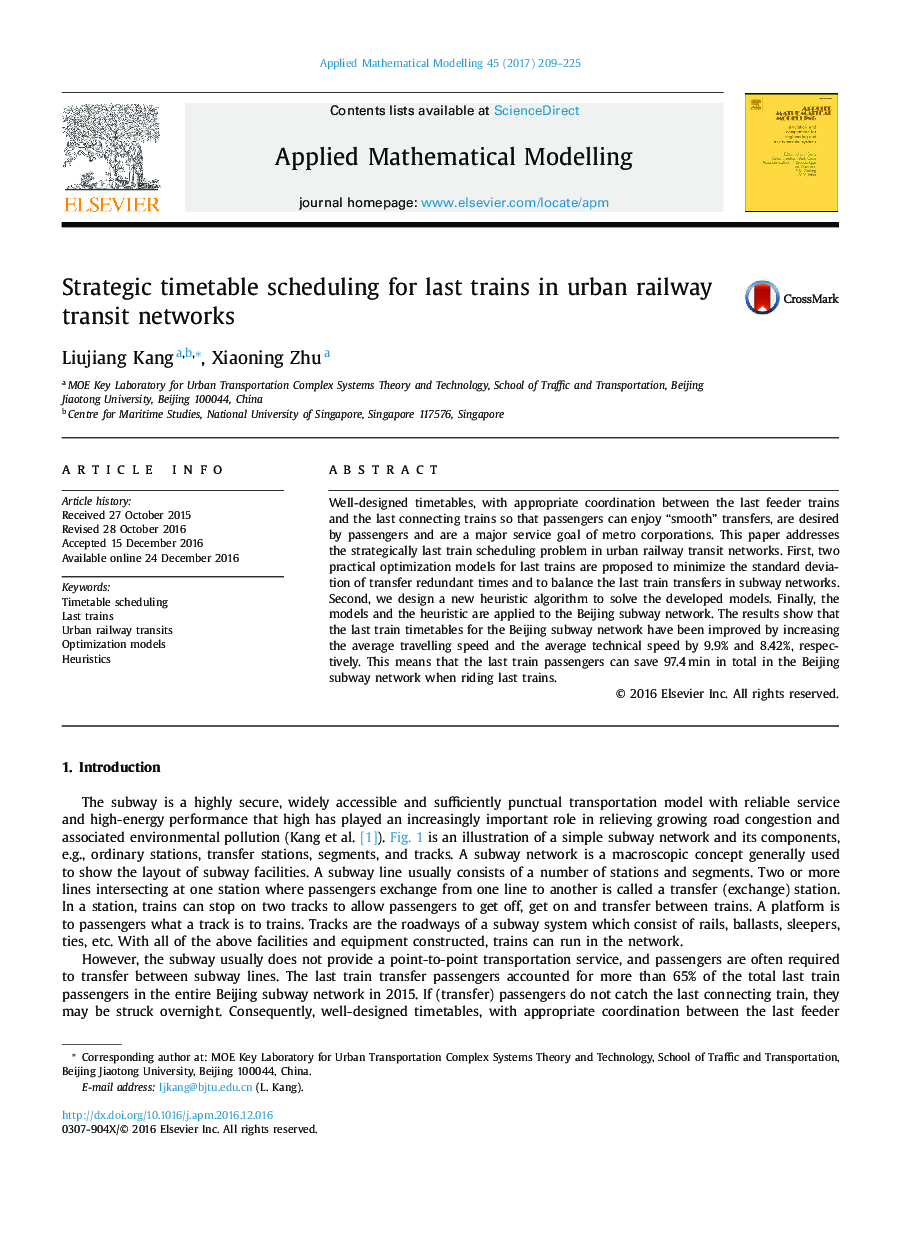| Article ID | Journal | Published Year | Pages | File Type |
|---|---|---|---|---|
| 5471188 | Applied Mathematical Modelling | 2017 | 17 Pages |
Abstract
Well-designed timetables, with appropriate coordination between the last feeder trains and the last connecting trains so that passengers can enjoy “smooth” transfers, are desired by passengers and are a major service goal of metro corporations. This paper addresses the strategically last train scheduling problem in urban railway transit networks. First, two practical optimization models for last trains are proposed to minimize the standard deviation of transfer redundant times and to balance the last train transfers in subway networks. Second, we design a new heuristic algorithm to solve the developed models. Finally, the models and the heuristic are applied to the Beijing subway network. The results show that the last train timetables for the Beijing subway network have been improved by increasing the average travelling speed and the average technical speed by 9.9% and 8.42%, respectively. This means that the last train passengers can save 97.4Â min in total in the Beijing subway network when riding last trains.
Keywords
Related Topics
Physical Sciences and Engineering
Engineering
Computational Mechanics
Authors
Kang Liujiang, Zhu Xiaoning,
